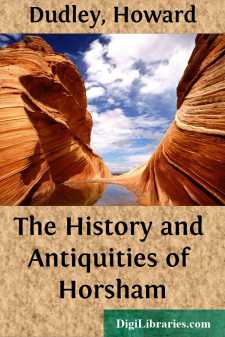Categories
- Antiques & Collectibles 13
- Architecture 36
- Art 48
- Bibles 22
- Biography & Autobiography 813
- Body, Mind & Spirit 142
- Business & Economics 28
- Children's Books 17
- Children's Fiction 14
- Computers 4
- Cooking 94
- Crafts & Hobbies 4
- Drama 346
- Education 46
- Family & Relationships 57
- Fiction 11829
- Games 19
- Gardening 17
- Health & Fitness 34
- History 1377
- House & Home 1
- Humor 147
- Juvenile Fiction 1873
- Juvenile Nonfiction 202
- Language Arts & Disciplines 88
- Law 16
- Literary Collections 686
- Literary Criticism 179
- Mathematics 13
- Medical 41
- Music 40
- Nature 179
- Non-Classifiable 1768
- Performing Arts 7
- Periodicals 1453
- Philosophy 64
- Photography 2
- Poetry 896
- Political Science 203
- Psychology 42
- Reference 154
- Religion 513
- Science 126
- Self-Help 84
- Social Science 81
- Sports & Recreation 34
- Study Aids 3
- Technology & Engineering 59
- Transportation 23
- Travel 463
- True Crime 29
The History and Antiquities of Horsham
by: Howard Dudley
Description:
Excerpt
The ancient town and borough of Horsham, which has generally been past over in topographical accounts, as a place unworthy of notice; or lost in the dazzling descriptions, of the “modern maritime Babylon of Sussex,” must always remain a spot, dear to the lover of antiquities, and romantic scenery. The derivation of its name, has ever continued a matter of great perplexity; which perhaps may be considered as a very strong argument, in favour of the antiquity of the place. Some persons conjecture, that the appellation is derived from the two Saxon words, hurst, and ham, the first syllable signifying a wood, and the second a village or collection of houses: and this opinion seems to be supported by the known fact, that this part of the county, was formerly one entire tract of forest land: but again quite as good if not a superior derivation, may be taken from the two words, Horsa, and ham, that is the village of, or built by, Horsa.
Horsham has enjoyed the privilege of sending two members to Parliament, ever since the year 1295: by the passing of the reform bill, however, one representative was considered sufficient for the business of the borough. The names of the persons first elected for the town, were Walter Burgeys, and Walter Randolf: Robert Henry Hurst esq. is the present member.
The spring assizes for the county, had also long been held in the Town-Hall of Horsham; but this privilege was selfishly abstracted from the town, by the inhabitants of Lewes; and even the county gaol, which has been stationed here, for time immemorial, is, we understand, to be removed to the all devouring eastern rival: the quarter sessions however, are still held here.
Still, notwithstanding, as respects the town, Horsham is greatly improving: the number of buildings which have been lately erected, and which are still erecting, are of a new and very handsome description: the streets are neatly paved, with the large flat stones procured from the excellent quarries in the neighbourhood; and the illumination of the streets by gas, which is being carried on with great spirit and energy, contribute very greatly to the general respectability and good appearance of the place.
Horsham consists of 4 principal streets, crossing one another at right angles, with a large square, stretching due N. and S., in the centre. The upper part of this square is commonly denominated the Gaol Green, in consequence of the prison, which formerly stood at the northern end, but of which two large walls, now found useful in an adjacent brewery, only remain.
The lower portion contains the large and handsome Town-Hall, of which the annexed sketch will afford some idea: a few years ago, the appearance which it presented was entirely different, being built on arches, in a similar manner, to the Council chamber, at Chichester, and surmounted by a stone with the inscription “Thirty six miles from Westminster Bridge,” engraved thereupon: by the kind liberality of the Duke of Norfolk, it was completely repaired, and greatly enlarged; and though no longer applied to its original purpose, (except in the instance of the quarter sessions) it is still found very serviceable for lectures, public meetings, &c. &c. The north front is embellished by the arms of royalty, flanked by those of Norfolk and Horsham. On either side of the Hall, is a neat street, only one of which is a thoroughfare; these meet on the southern side of the building, in a very handsome and respectable walk, called the Church Causeway, at the termination of which, is the ancient and spacious church, (dedicated to St Mary) the approach is rendered particularly picturesque, by an avenue of lofty lime trees, of some extent, which leads in a perfectly straight direction, to the church-yard gateway: the effect of the view from this avenue, is exceedingly pleasing, particularly of a summer evening, when the rays of the setting sun cast a beautiful golden tint, upon the venerable porch, which appears a conspicuous object behind the portal.
...


